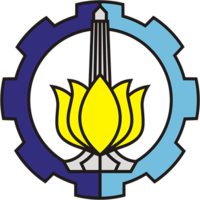Politics meets healthcare? Religious misinformation in India during the COVID-19 pandemic
Abstract
India has recently become a hotspot of misinformation: the COVID-19 brings a new opportunity for the rumor-spreaders. Of various categories, religious misinformation seems harmful for both Indian society and public health. In this paper, therefore, I tried to sketch a few necessary aspects of religious misinformation in India during the COVID-19. From the previous literature and ongoing trend of Indian misinformation, I identified two important phenomena: (a) Though Muslims produce more spiritual misinformation, most of the religious misinformation targeting Muslims is inspired by Islamophobia; (b) misinformation that tries to champion Hinduism is more related to the contemporary political ideologies of India. I also tried to explain how religion as a political issue relates to public health
Keywords
Full Text:
PDFReferences
Al-Zaman, M. S., Sife, S. Al, Sultana, M., Akbar, M., Ahona, K. T. S., & Sarkar, N. (2020). Social Media Rumors in Bangladesh. Journal of Information Science Theory and Practices, 8(3), 77–90. https://doi.org/10.1633/JISTaP.2020.8.3.6
Alimardani, M., & Elswah, M. (2020). Online Temptations: COVID-19 and Religious Misinformation in the MENA Region. Social Media + Society, 6(3), 205630512094825. https://doi.org/10.1177/2056305120948251
Apoorvanand. (2020, April). How the coronavirus outbreak in India was blamed on Muslims.
Arun, C. (2019). On WhatsApp, Rumours, and Lynchings. Economic and Political Weekly, 54(6), 30–36.
Chaturvedi, S. (2016). I am a Troll: Inside the Secret World of the BJP’s Digital Army. Juggernaut Publication.
DW. (2020, March). Hindu group hosts cow urine drinking party to ward off coronavirus. DW.
Funke, D., & Flamini, D. (2019). A guide to anti-misinformation actions around the world. New York, USA.
Islam, M. S., Sarkar, T., Khan, S. H., Mostofa Kamal, A.-H., Hasan, S. M. M., Kabir, A., … Seale, H. (2020). COVID-19–Related Infodemic and Its Impact on Public Health: A Global Social Media Analysis. The American Journal of Tropical Medicine and Hygiene, tpmd200812. https://doi.org/10.4269/ajtmh.20-0812
Longoria, J., Ramos, D. A., & Webb, M. (2020, September). In Latin America, religious misinformation on Covid-19 spreads with the help of the Christian press.
Mukherjee, R. (2020). Mobile witnessing on WhatsApp: Vigilante virality and the anatomy of mob lynching. South Asian Popular Culture, 18(1), 79–101. https://doi.org/10.1080/14746689.2020.1736810
Partha, M. (2020, April). India hospital segregates Muslim and Hindu coronavirus patients. Al Jazeera.
Purohit, K. (2020, March). Misinformation, fake news spark India coronavirus fears.
Raj, A., & Goswami, M. P. (2020). Is fake news spreading more rapidly than COVID-19 in India? Journal of Content, Community and Communication, 11(10), 208–220. https://doi.org/10.31620/JCCC.06.20/15
Sahoo, N. (2020, May). How fake news is complicating India’s war against COVID-19.
Sarkar, S. (2020). Religious discrimination is hindering the covid-19 response. BMJ (Clinical Research Ed.), 369, m2280. https://doi.org/10.1136/bmj.m2280
Social Media Stats India. (2019, August). StatCounter.
Sutaria, S. (2020). Coronavirus Misinformation in India Is Not Limited to Health Misinformation. Delhi, India.
ToI. (2020, July). Coronavirus myth vs. fact: WhatsApp forward claiming turmeric and black pepper home remedy to cure COVID-19 is fake. Times of India (ToI).
Udupa, S. (2017). Viral video: mobile media, riot and religious politics. In S. Udupa & S. D. McDowell (Eds.), Media as politics in South Asia (pp. 190–205). Milton Park, Abingdon, Oxon ; New York, NY: Routledge.
Worldometer. (2020, November). India Coronavirus: 8,478,689 Cases and 125,895 Deaths.
DOI: http://dx.doi.org/10.12962%2Fj24433527.v13i2.8119
Refbacks
- There are currently no refbacks.
This work is licensed under a Creative Commons Attribution 4.0 International License.





